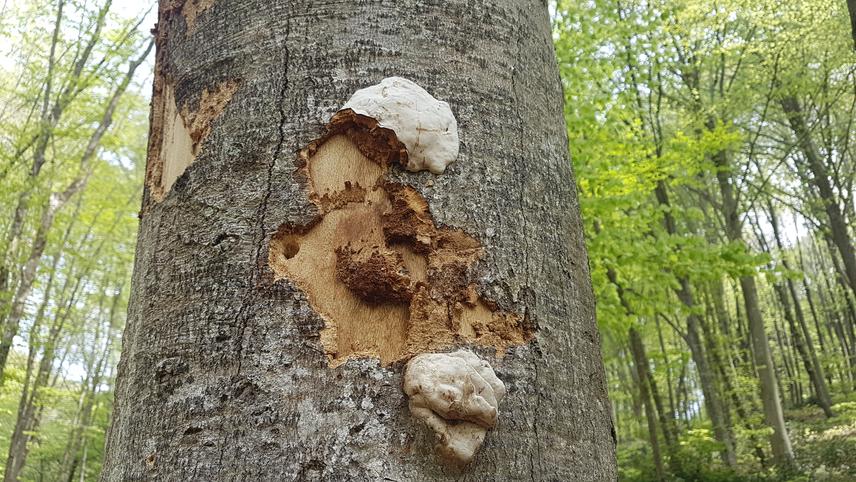İrem Tüfekcioğlu
Other projects
9 Jul 2019
Identifying Conservation Importance of Maquis Habitats and Developing New Approaches on Integrating Maquis Vegetation to Forest Management Plans in Turkey
Tree microhabitats consist of elements such as cavities, injuries and wounds, deformations on the tree, deadwood, epiphytes on the roots, trunk and branches of living and dead trees which are used by other species such as birds, mammals and insects for nesting, sheltering or feeding activities. As tree microhabitats are important substrates and structures for ecological value of a forest ecosystem, they have a key role in the context of sustainability for biodiversity. Indeed, many studies in recent years have used tree microhabitats as indicators to determine how forestry activities, i.e., nature conservation, recreation, logging and management in forest ecosystems, affect biodiversity.

A bark loss: Home for butterflies and fungi.
Turkey’s forests, like many forest ecosystems around the world, are weakening day by day in terms of biological diversity due to human pressure. It is necessary to determine the level of this pressure, which has increased due to several reasons. For instance, the increasing desire of people to return to nature, especially after COVID, elevated the accessibility of the Yedigöller National Park. Thus, increasing visitor numbers resulting with the degradation of highly sensitive ecosystems brings the necessity of changing the conservation strategy plans before it is too late. This project aims to both enrich the biological diversity in the areas damaged due to recreational pressure and draw attention to the conservation of tree microhabitats by making ecological evaluations with practical methods in Turkey’s one of the most popular protected areas, Yedigöller National Park. In Turkey, no such detailed study has been conducted on tree microhabitats. Therefore, this project will be the first in Turkey to develop conservation plans and strategies using the tree microhabitats approach.
Header: A trunk-base rot-hole: Home for spiders, rodents, reptiles and lichens.